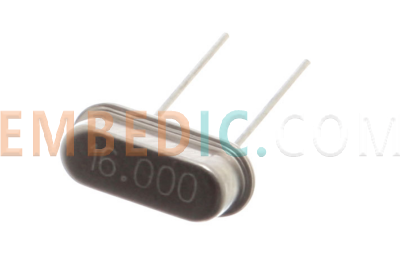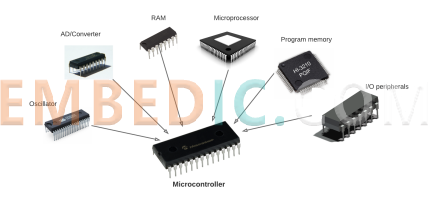A crystal oscillator is a crystal oscillator, an electronic component that produces a stable frequency. A crystal oscillator usually consists of a crystal in the shape of a thin sheet (usually a quartz crystal) and a circuit connected to it. When an electric field or voltage is applied to the crystal, it causes the crystal to undergo a small mechanical vibration that occurs at an intrinsic frequency called the resonant frequency.

Crystals are widely used in electronic devices, especially in clock circuits. They provide a very accurate time base for synchronizing and timing the operation of various electronic systems. For example, in computers, communication equipment, microcontrollers and other digital electronic devices, crystals are used to ensure accurate clock signals to coordinate various operations and data transfers.
Selection of the proper frequency and type of crystal is important to ensure system stability and accuracy, so when designing electronic circuits, it is often necessary to select the appropriate crystal oscillator for the specific application requirements.
Learn crystal oscillator with a video,
A microcontroller (MCU) is a microcomputer system that integrates a processor core, memory (including flash memory and RAM), input/output (I/O) ports, and various peripherals (e.g., timers, serial communication interfaces, etc.). It is usually integrated into a single chip and is used to control a variety of electronic devices and systems.

Characteristics of a microcontroller include:
Since microcontrollers integrate a processor and a variety of peripherals, they are often used to perform specific tasks or control functions such as sensor data acquisition, motion control, display control, communications, etc. Common manufacturers of microcontrollers include Microchip (PIC series), Atmel (AVR series), STMicroelectronics (STM32 series), etc. Each series has different models and features to meet various application requirements.
The design of separating a crystal from a microcontroller involves circuit design, performance and reliability considerations.
1. Circuit design aspects
The crystal is the main clock source of the microcontroller and is responsible for providing a stable clock signal to ensure the normal operation of the microcontroller. The separation design of the crystal and the microcontroller allows the crystal circuit to focus more on providing a stable clock signal without worrying about the interference and influence of other circuits of the microcontroller. At the same time, the crystal circuit can be optimized, adjusted and tested independently to achieve higher precision and stability.
2. Performance
As the interference and noise of the circuit of the microcontroller itself may affect the crystal circuit, if the crystal is integrated inside the microcontroller chip, it may increase the interference sensitivity of the crystal circuit, which in turn reduces the performance of the crystal. Therefore, separating the crystal from the microcontroller design can reduce the interference and influence of the crystal by other circuits and improve the performance indicators of the crystal, such as frequency accuracy, frequency stability and start-up time.
3. Reliability
Separating the design of crystal and microcontroller can improve the reliability of the whole system. The crystal belongs to the mechanized devices in the electronic devices, and its working reliability and life span are sometimes affected by factors such as environmental vibration, temperature change and mechanical pressure. If the crystal is integrated inside the microcontroller chip, once the crystal fails, the whole chip needs to be replaced, which not only increases the maintenance and replacement costs, but also leads to increased system downtime. While the crystal and the microcontroller separate design, they can be maintained and replaced as independent devices to improve the maintainability and reliability of the system.
4. Compatibility
Different types of microcontrollers often need to be adapted to different frequencies of the crystal, integrated crystal may limit the frequency options of the microcontroller. The crystal and microcontroller separate design, you can choose a different frequency crystal according to the specific needs to meet the requirements of different applications. At the same time, a separate crystal design also makes it easier to upgrade and adjust the clock frequency.
In summary, the separate design of crystal and microcontroller is designed to optimize circuit design, improve performance and reliability, and increase compatibility and other considerations. Although integrated crystals have the potential to save space and reduce costs, designing crystals separately from microcontrollers is more in line with the requirements of engineering applications.
Manufacturer: Microchip
IC MCU 8BIT 32KB FLASH 28SOIC
Product Categories: 8bit MCU
Lifecycle:
RoHS:
Manufacturer: Texas Instruments
IC DGTL MEDIA PROCESSOR 529FCBGA
Product Categories: DSP
Lifecycle:
RoHS:
Manufacturer: Microchip
IC MCU 16BIT 16KB FLASH 20SOIC
Product Categories: 16bit MCU
Lifecycle:
RoHS:
Manufacturer: Texas Instruments
IC DGTL MEDIA PROCESSR 1031FCBGA
Product Categories: DSP
Lifecycle:
RoHS:
Looking forward to your comment
Comment